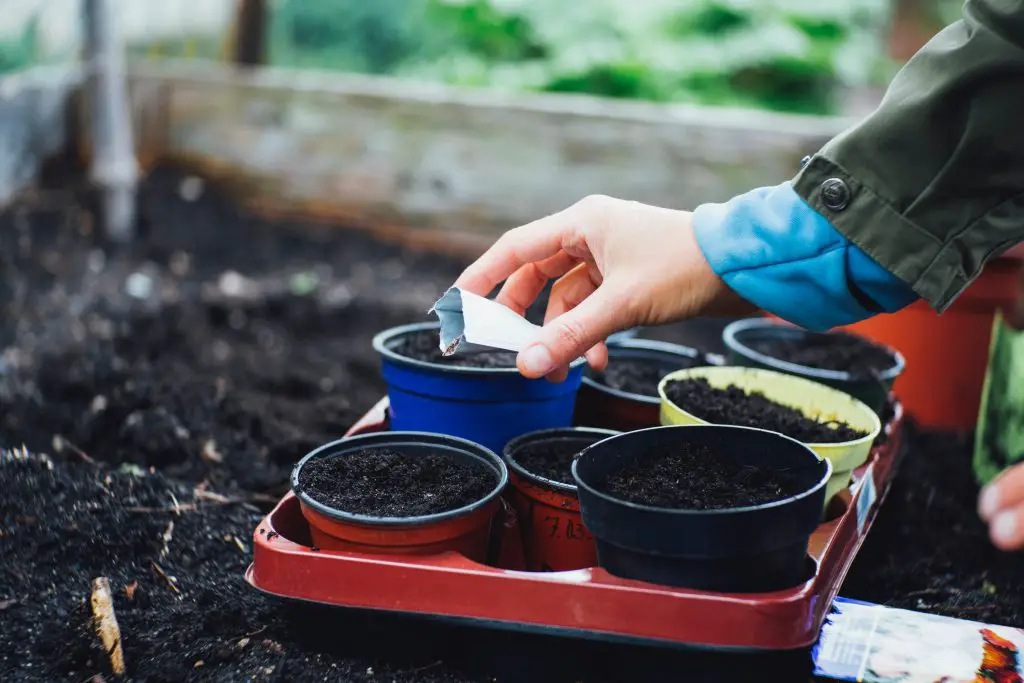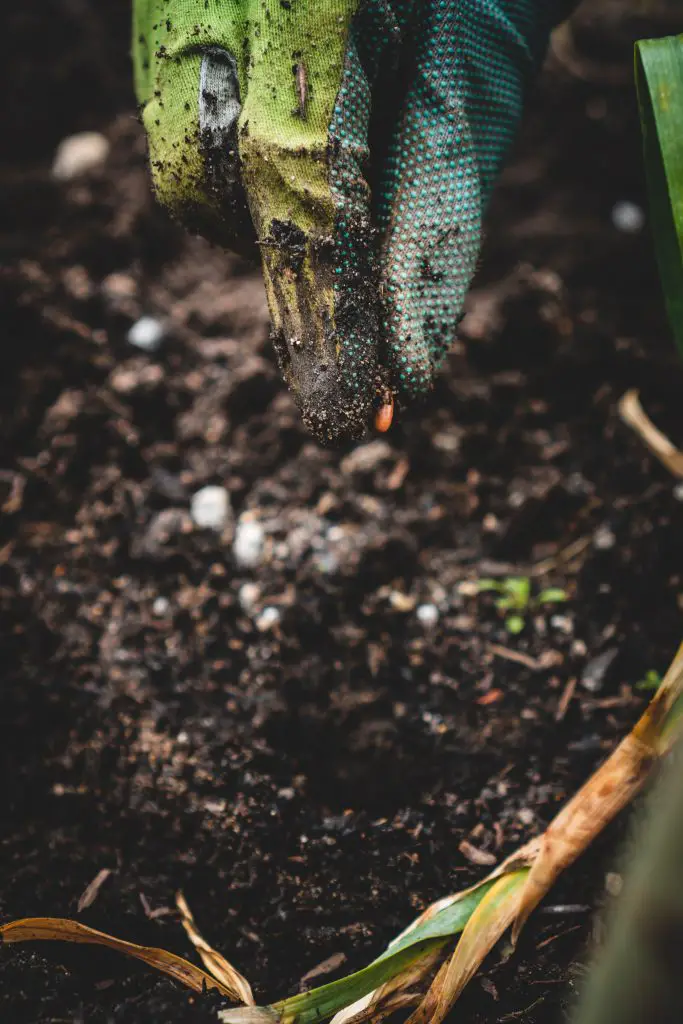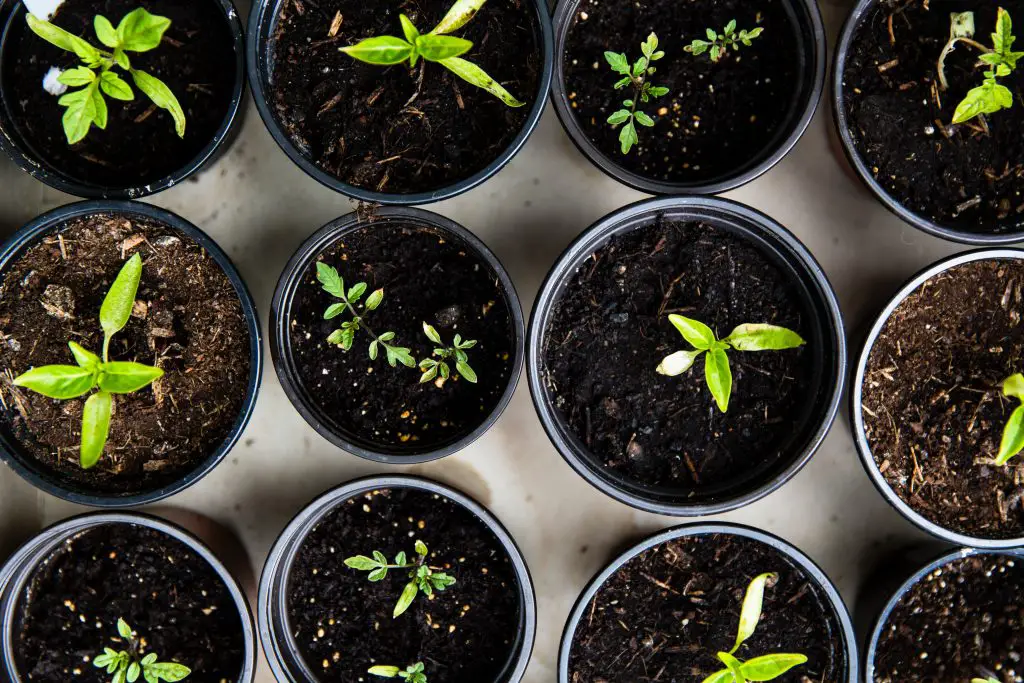How Many Seeds To Plant In One Hole? Is It Better To Plant More Than One? If you are a beginner gardener and starting to create your new garden by planting seeds out one of the most common questions that is asked is how many seeds should you put in a planting hole?
The number of seeds that should be planted into a hole is usually 2 to 3 seeds. The reason for this is that it is common for not all seeds to germinate so planting 2 to 3 give you an insurance policy that you were at least have something come up in your garden. However, depending upon the nature of the plant, you may need to remove a couple of plants if all the seeds germinate.
This method, which is sometimes referred to as multisowing, can also be used to improve the yield in a vegetable garden while reducing the amount of work required to transplant and maintain plants. This is a method that is recommended by Charles Dowding, a well-known market gardener that has published several books.

Multisowing is extremely effective for a range of vegetables such as onions, beetroots, radishes, and leeks as it allows the gardener to sow usually anywhere between 4 and 6 seeds per planting hole with an aim of generally getting around 5 plants in a clump.
The advantage of multisowing is that you will get more plants in a seed tray, and the transplanting of the seedlings into the garden is also much quicker. This is because every time you make a planting hole you are planting 4 to 5 seedlings per cell making it much faster.
Additionally, the other key advantage is that you can spread out your clumps a little more than you would otherwise which is also beneficial because it allows the use of a dutch hoe to remove weeds. This is generally much faster than hand weeding and usually makes it easier to maintain your vegetable garden.
However, there is a limit on the number of seeds you can put in a clump and still get a reasonable yield. The reason for this is because if you have more than 4 to 5 seedlings in a clump it will start to affect the size of the vegetables that you produce due to overcrowding. Additionally, this method is also not suitable for all vegetables. A list of the vegetables and the quantity to sow per clump that is recommended by Charles are provided in the table below.

You will note that there is a recommended number of seeds per clump and then also the desired number of plants per clump. The reason that this detail is provided is that sowing an additional seed or two will ensure that you produce the desired number of plants in the clump if a seedling or two does not germinate.
As a result of putting in more seeds than you actually want you maybe required to thin the clumps before planting them out into the garden.
| Vegetable | Seeds per clump | Desired plants per clump |
| Basil | 3 or 4 | 2 or 3 |
| Beetroot | 4 | 4 |
| Chard for salad/ to cook | 2 to 4 | 3 to 5/1 to 2 |
| Chervil, coriander, dill, parsley | 3 | 2 |
| Fennel, Florence | 3 | 1 or 2 |
| Kale for salad | 4 | 3 |
| Leek | 5 or 6 | 2 to 4 |
| Onion for bulbs | 6 or 7 | 4 or 5 |
| Onion for salad | 8 or 10 | 6 or 8 |
| Oriental leaves to cook | 2 | 1 |
| Oriental leaves for salad | 4 | 3 |
| Peas for pods | 2 or 3 | 1 or 2 |
| Peas for shoots | 4 or 5 | 3 or 4 |
| Radish | 5 or 6 | 4 or 5 |
| Rocket, salad and wild | 3 or 4 | 2 or 3 |
| Spinach for salad | 4 | 3 or 4 |
| Turnip | 5 | 3 or 4 |
When looking at the list compiled by Charles what you will note is that there are a number of plants that are recommended for multi sowing such as kale and pea shoots which are only recommended for specific circumstances when you were trying to create baby leaves for salads. The basis of this recommendation is that when you are growing things where you are going to harvest the leaves fairly early on you can afford to plant them closer together because the plants never get very big.
Whereas other root crops such as beetroot and turnips can be planted close together because the roots can sit together without impacting their relative size. However, normally the size of the roots within a clump does not grow uniformly and it is therefore beneficial if you harvest the largest roots from each clump when they’re ready.

To do this without disturbing the roots of the other plants you need to twist the plants out rather than pull on them as that is likely to remove the entire clump.
The other noteworthy vegetable in this list is onions which Charles has actually divided into salad onions (spring onions) and onions for bulbs. This is one example where you can actually combine these two things to produce a dual-purpose crop. This is because bulb onions start off initially looking like spring onions before the bulbs begin to swell. You can pick the spring onions and then allow only a few onions with a clump to age and produce bulbs.
To do this we recommend planting approximately 10 to 12 seeds in a clump in mid-winter in a tray. When the weather warms up you can transplant the onions into the garden. Once the plants reach the size of a typical spring onion approximately half the clump can be removed leaving 4 to 5 onions to go on to produce the final bulbs. To see this method in action watch the video below.
I hope you found this article useful and have great success in your garden growing either flowers or vegetables, if you have any additional comments or questions please leave them in the section below.
Relevant Articles
What Are The Advantages Of Hybrid Seeds Over Open Pollinated Seeds?
How Long Does It Take For Seeds To Germinate?
Germinating Seeds In Paper Towel Vs Soil: What Are The Benefits?
Tricks To Planting Carrot Seeds That Really Work
